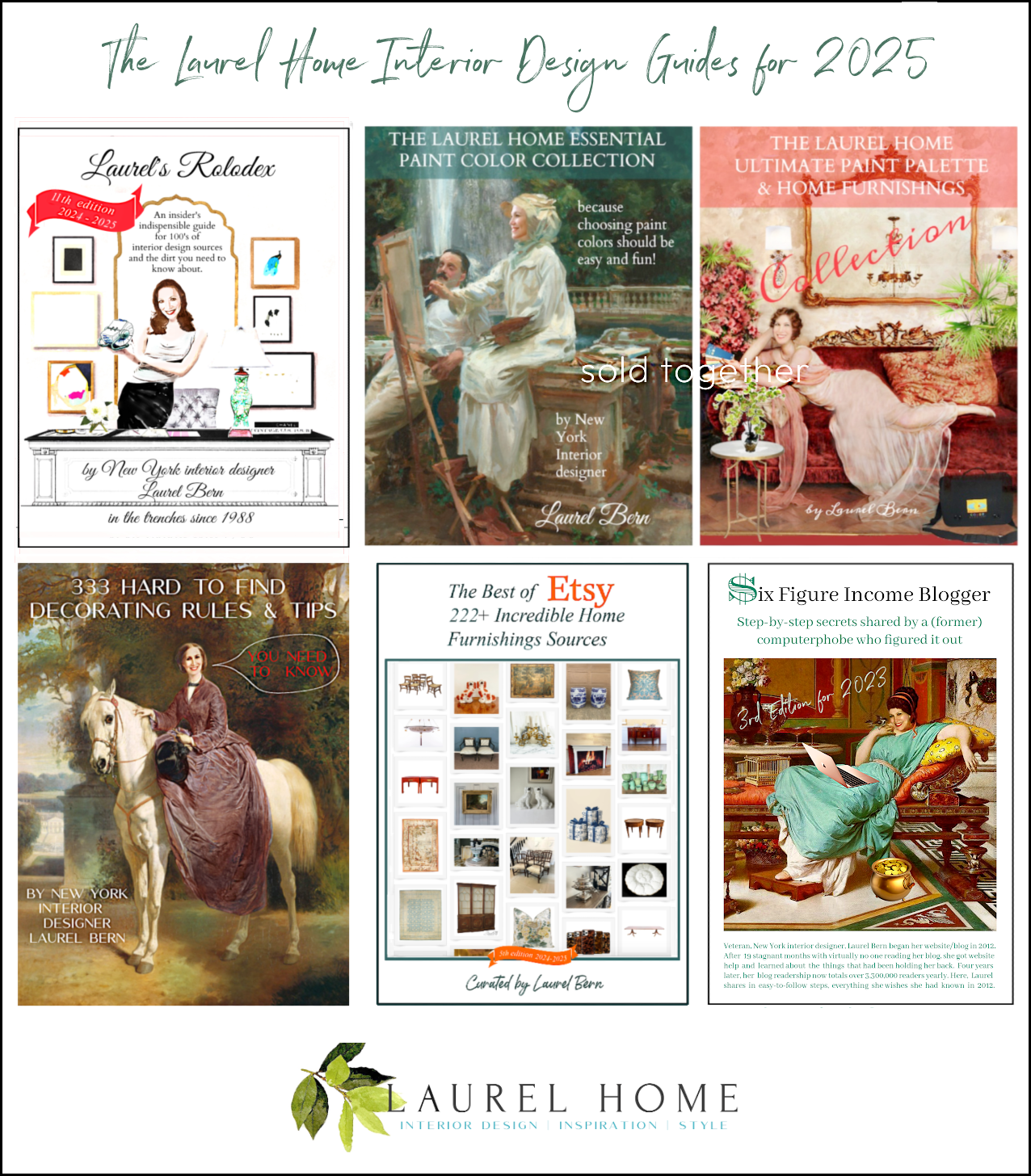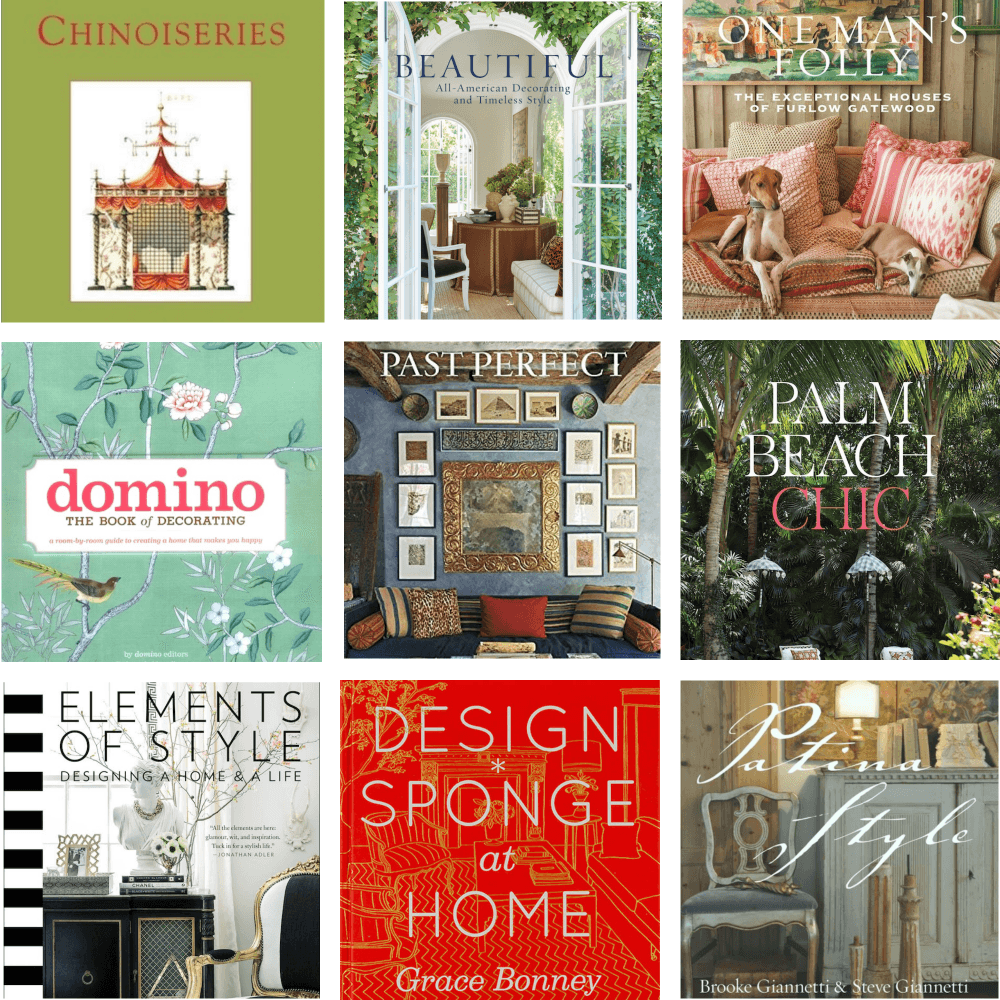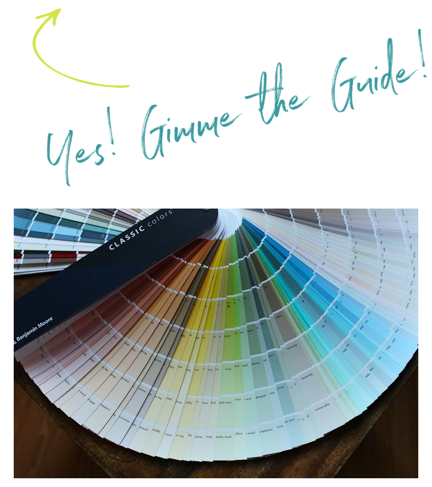Hi Guys,
Thank you all so much for all of the lovely comments about Sunday’s post featuring the beautiful architecture and spring flowering trees in the Back Bay section of Boston.
My lovely son, Cale, is here! How lucky am I!
I warned him a few days ago that I would need help with my little garden.
Remember it from last September?
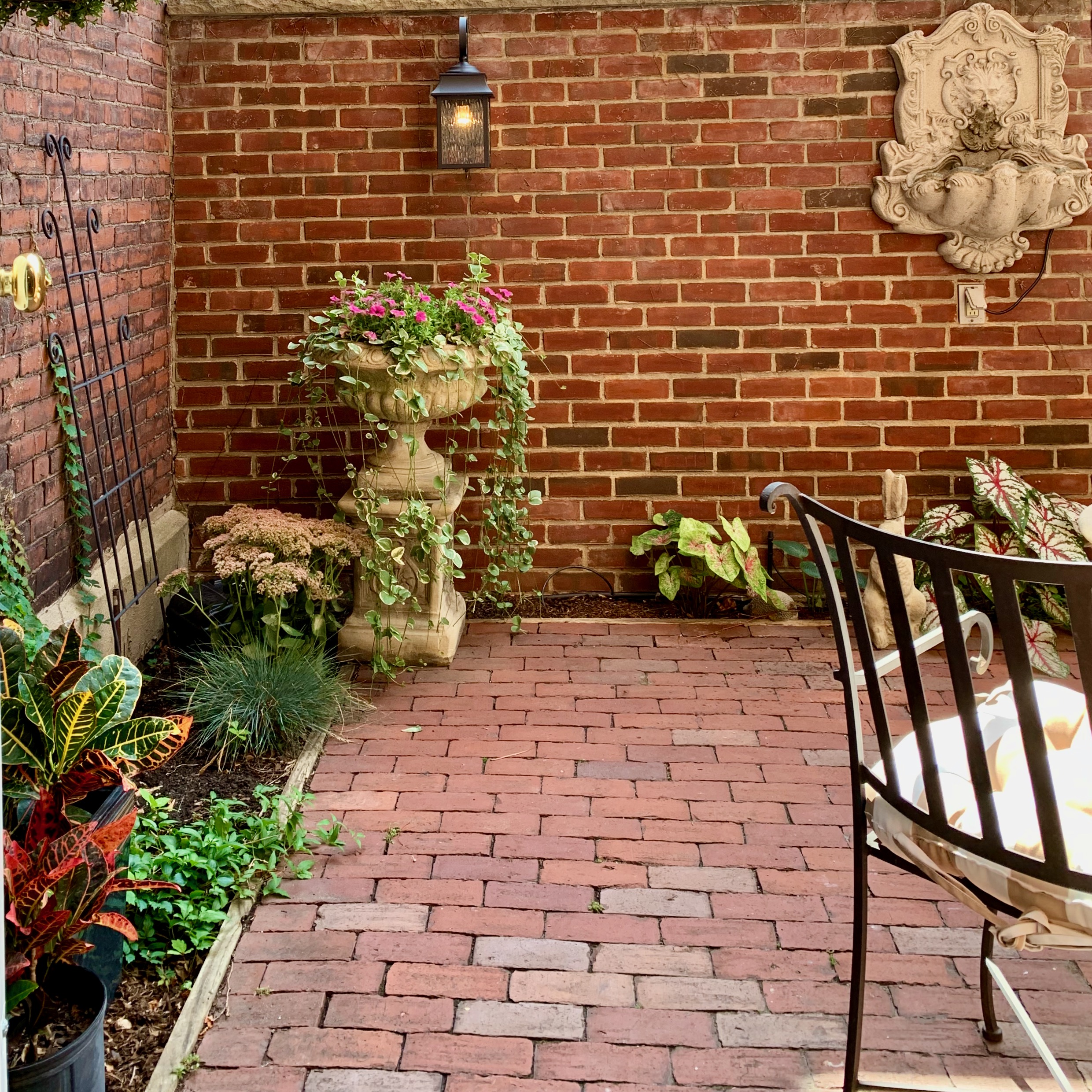
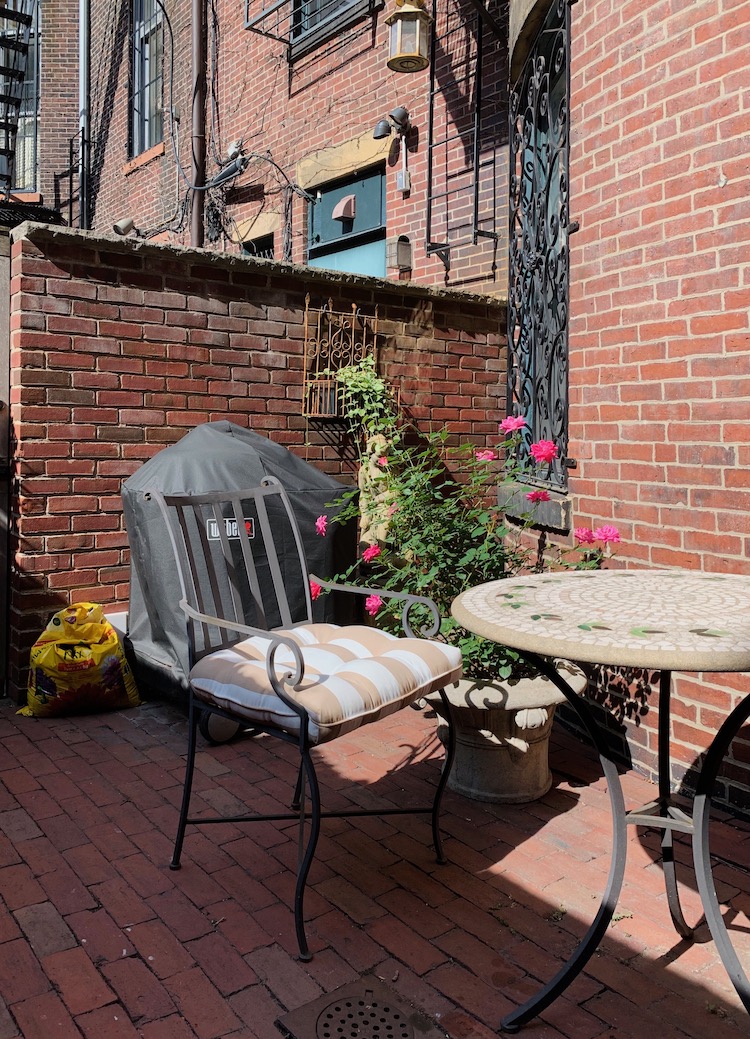
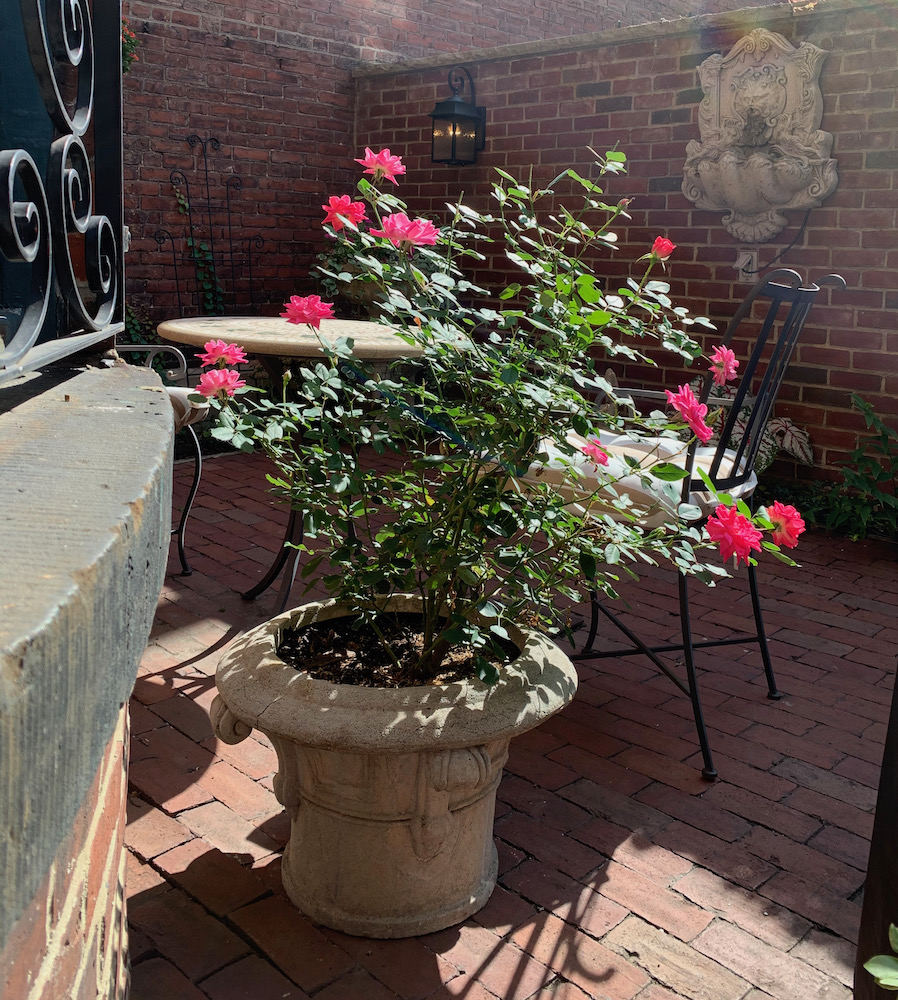
I was so excited to see this charming outdoor space. Two things I’ve always wanted were
- a working fireplace
- and some outdoor space, all my own.
I am so lucky to have this wonderful small patio garden space. It’s my very own little piece of Boston landfill. lol, Remember that where my house is located was underwater less than 200 years ago.
In fact, most of Boston was.
Laurel, I’m a little confused by the title of the post. It says the Ultimate Guide For a Small Patio Garden.
Yes, I know what it says. I wrote it. ;] What about it?
Well, I recall that you said that you don’t know diddly squat or something like that about gardening.
Uh-huh, I have said that; it’s true! I’m almost completely clueless. haha
So, how does that put you in the position of being able to write the “guide to the ultimate small patio garden?”
It doesn’t. That’s because I’m not the one who’s going to be writing the “ultimate guide.” You guys are. Or, at least those of you who know what you’re talking about. I hope you’ll help me out. Otherwise, it’s going to be a sad little guide.
I mean, I know what I like.
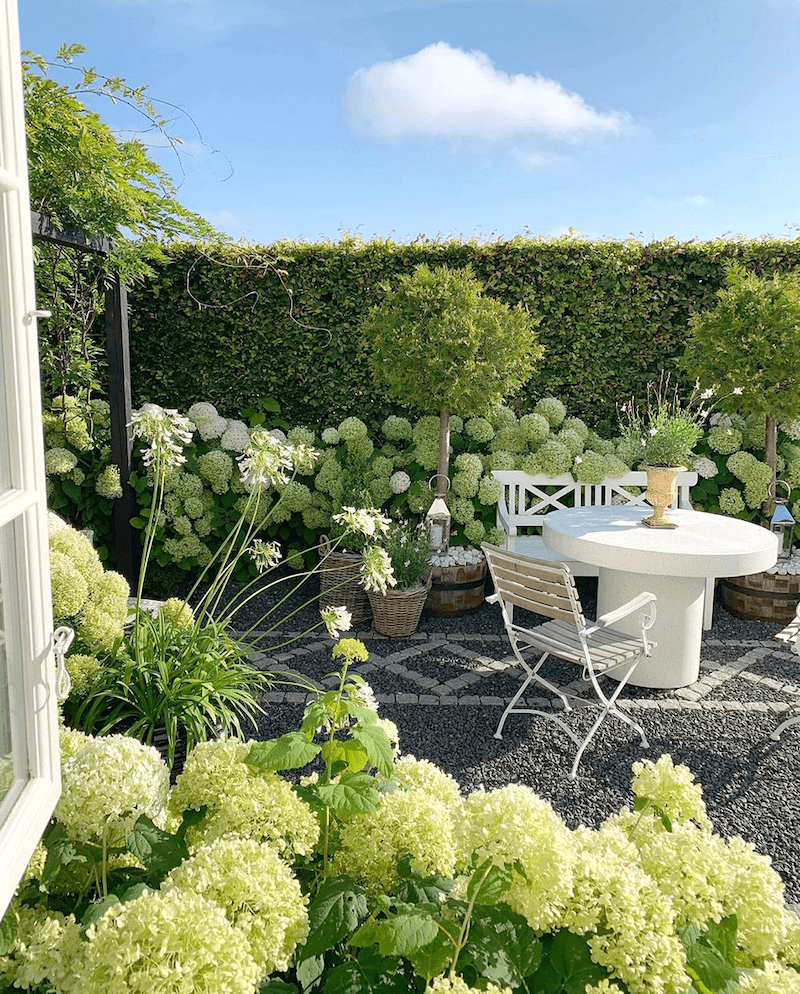 @gncgarden on Instagram – This is one of my favorite accounts on insta. I mean, every image is absolutely breathtaking. This woman has an unparalleled green thumb, and her flowers are jaw-droppingly beautiful.
@gncgarden on Instagram – This is one of my favorite accounts on insta. I mean, every image is absolutely breathtaking. This woman has an unparalleled green thumb, and her flowers are jaw-droppingly beautiful.
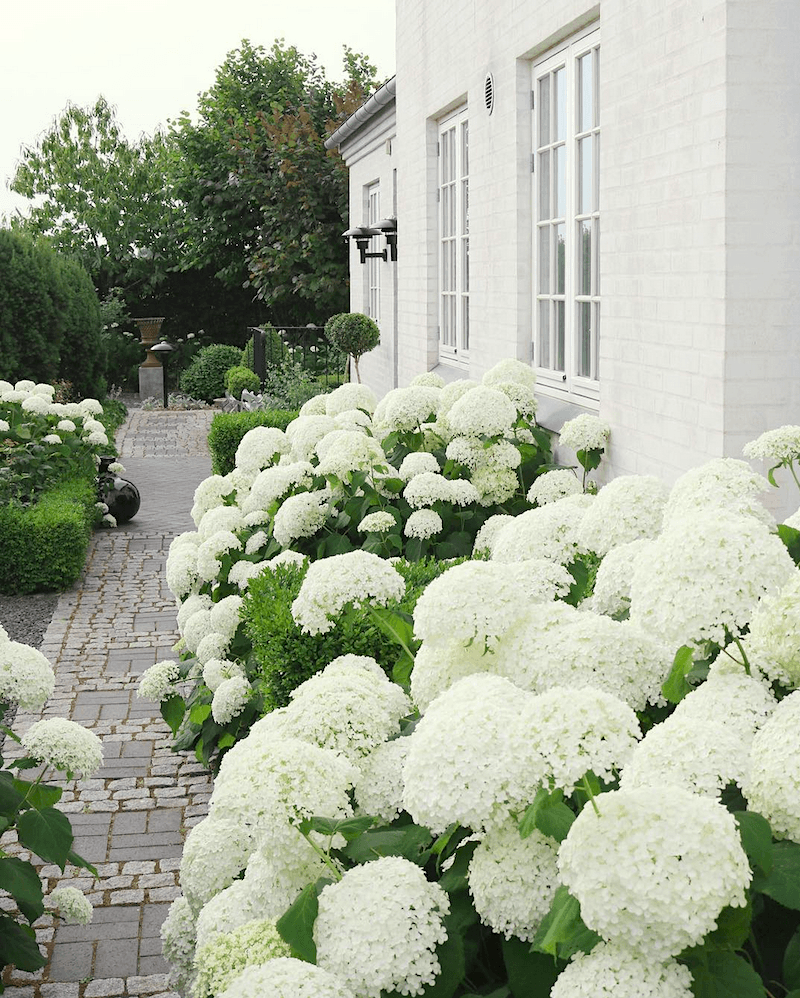
More of the same from GNC.
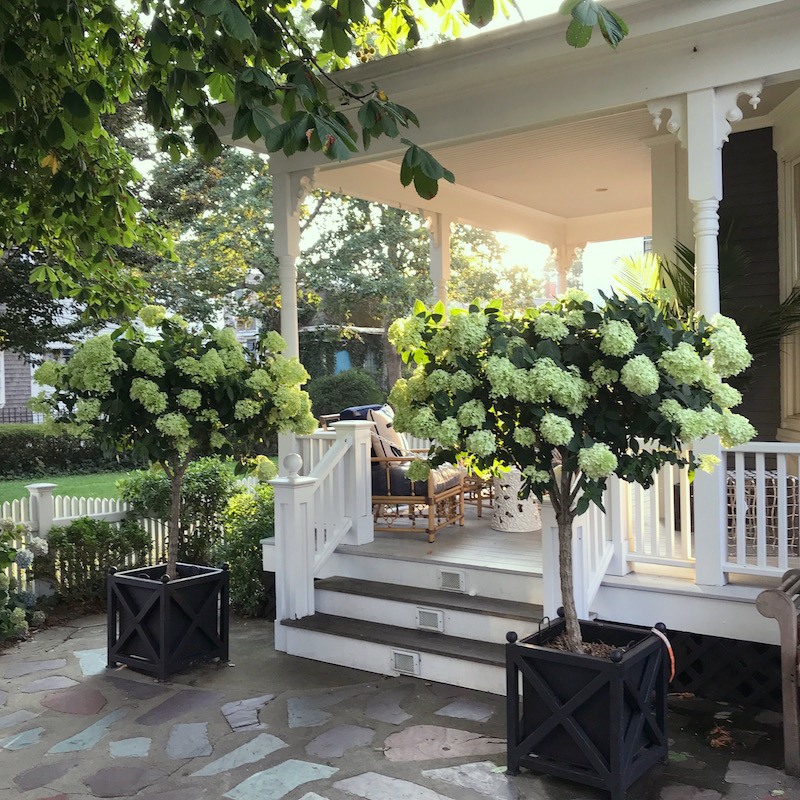
Remember this from three summers ago when Cale and I went to Provincetown on Cape Cod. I took this photo outside Shor Home in P-Town. These hydrangea topiaries are beyond showstopping. Yes, even the drag shows P-Town is known for. lol
So, apparently, you can grow hydrangeas in a pot. However, I’m not sure about planting them in my tiny flower beds.
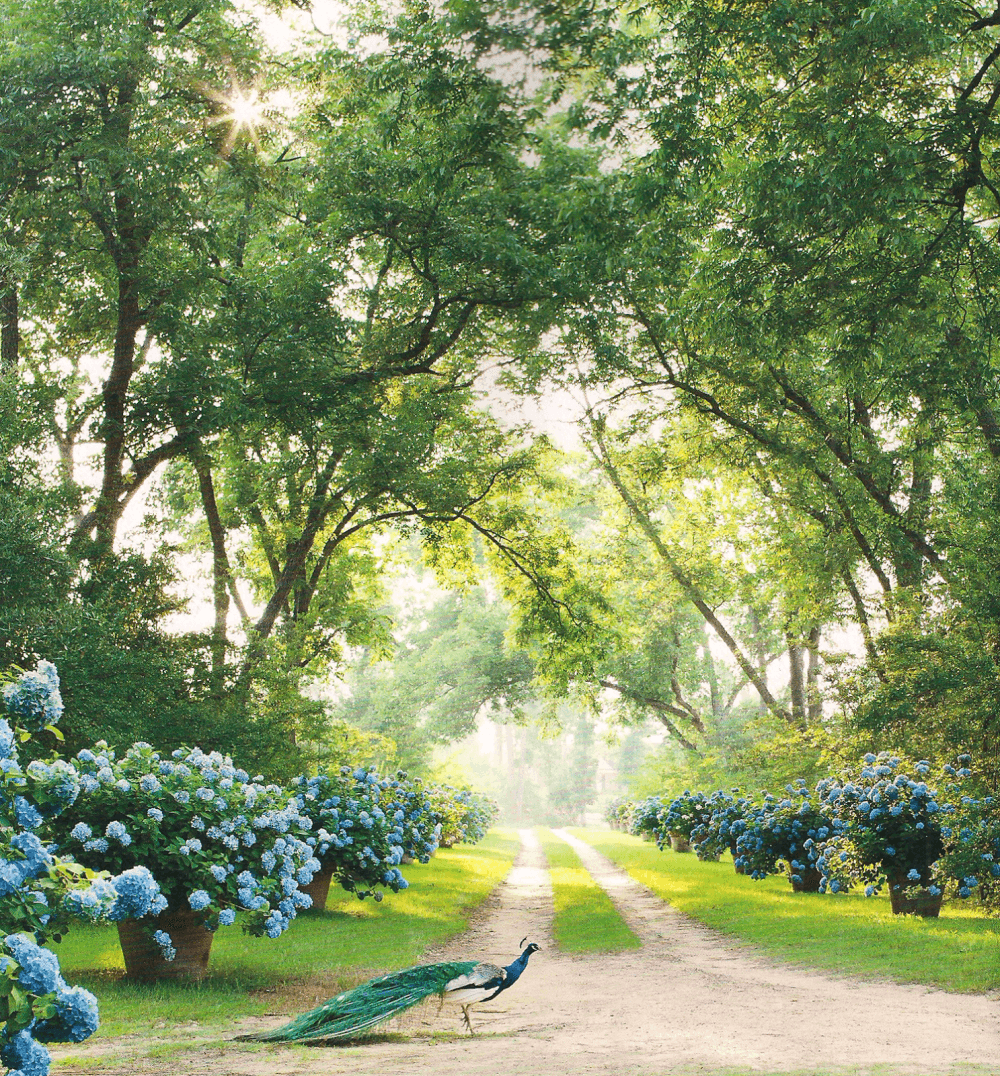
And, here’s the proof that you can grow them in a pot. From Furlow Gatewood.
HOWEVER – I’m putting this in bold since people skim. I DO realize that Furlow lives in Georgia, and I am living in coastal Massachusetts.
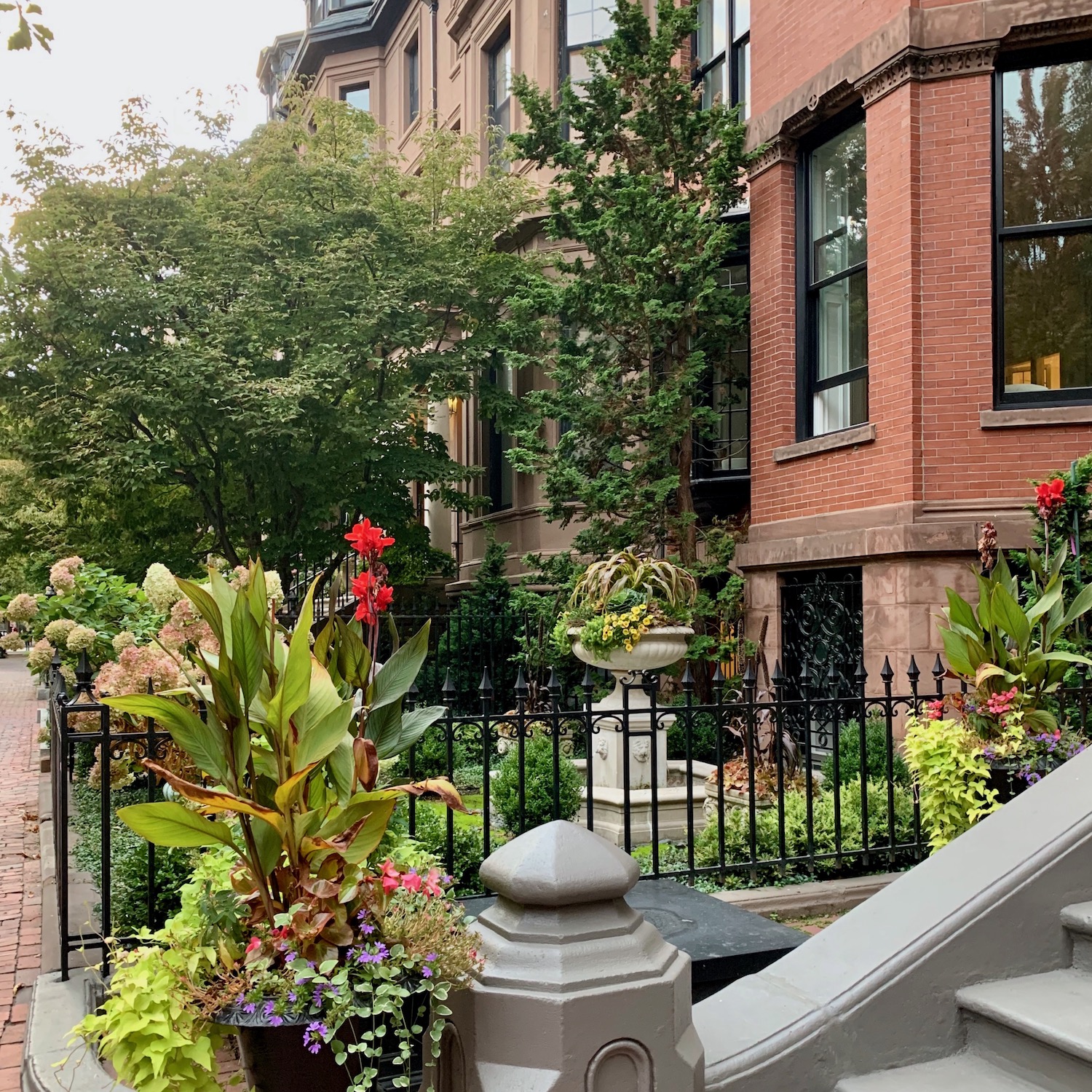
photo I took last fall when I was searching for my new home!
Gardens and gardening are very big in Boston and actually throughout New England.
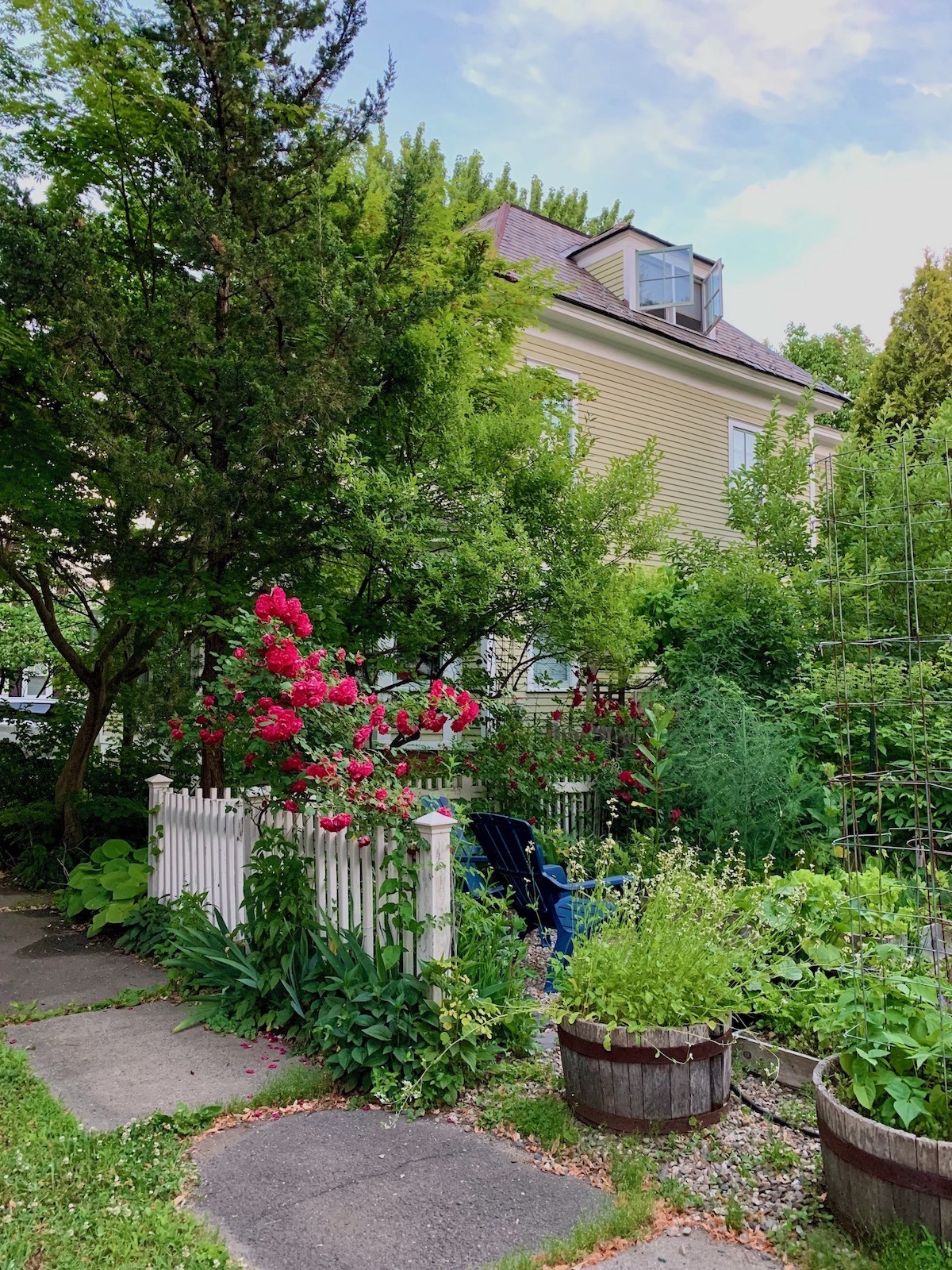
Remember the post from nearly a year ago when I was in Northampton featuring the beautiful homes and gardens there?
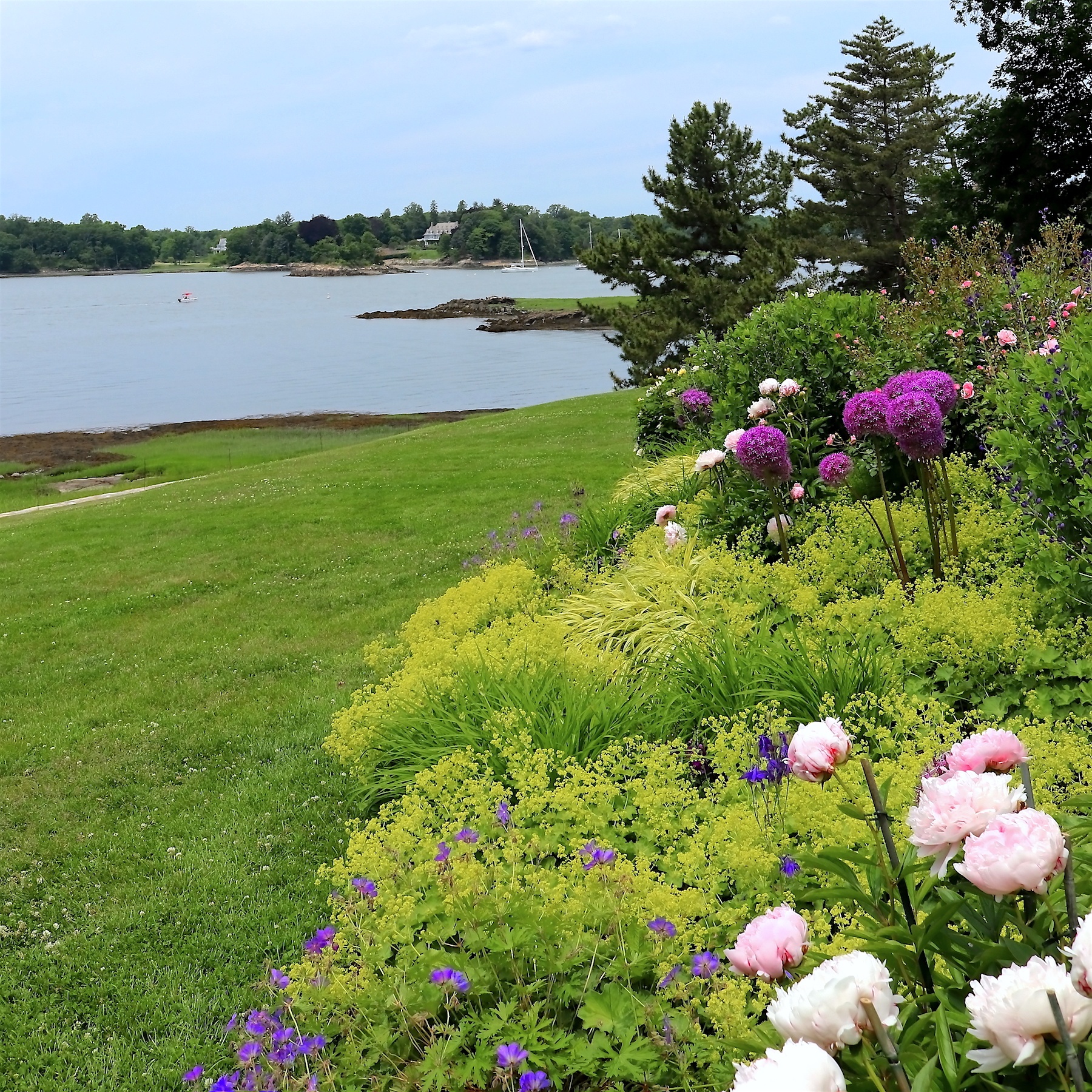
And, then in June 2019, I went on the most exquisite garden tour in Greenwich, CT.
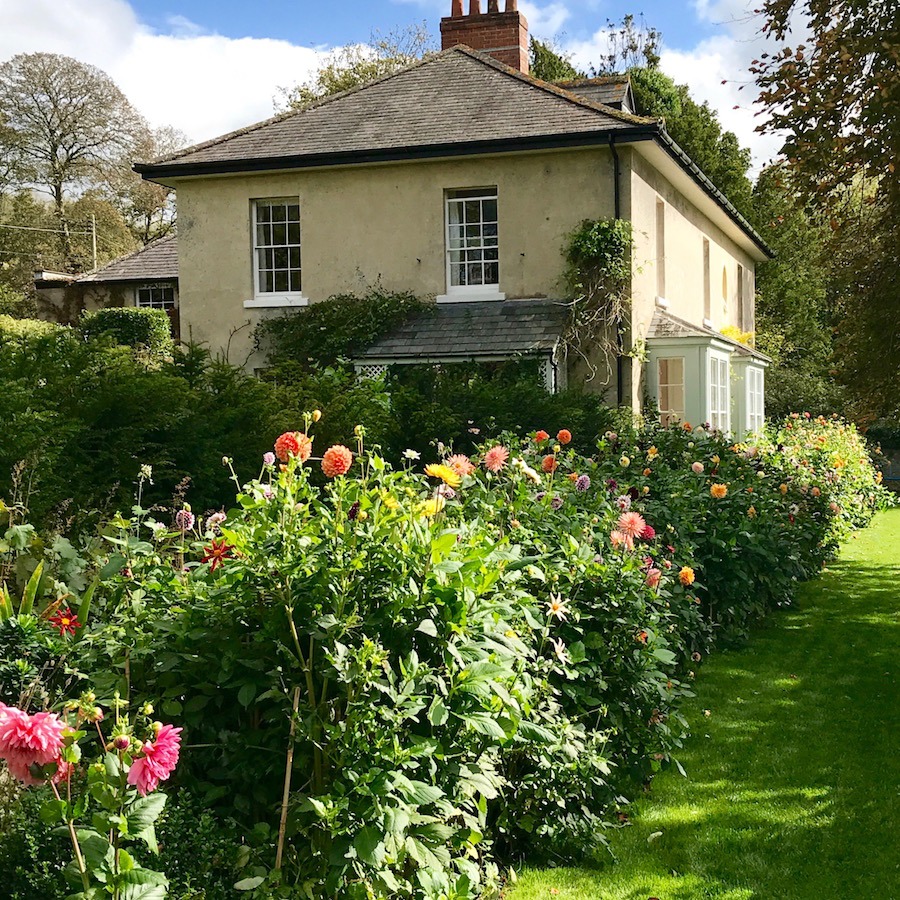
But, it makes sense. New England’s roots come from England, and of course, that is the land known for its exquisite gardens. Here are some incredible gardens that I saw on my trip to England in 2017.
Above is a pic I took of the legendary dahlias from the garden of Ben Pentreath and Charlie McCormick.
Okay, so now it’s time to face the music and take a look at my small patio garden.
When I moved on December 21st, the patio was covered with snow. After that, I pretty much never went out there. It was only a couple of weeks ago that I went out there for the first time, and I noticed that it was pretty sad.
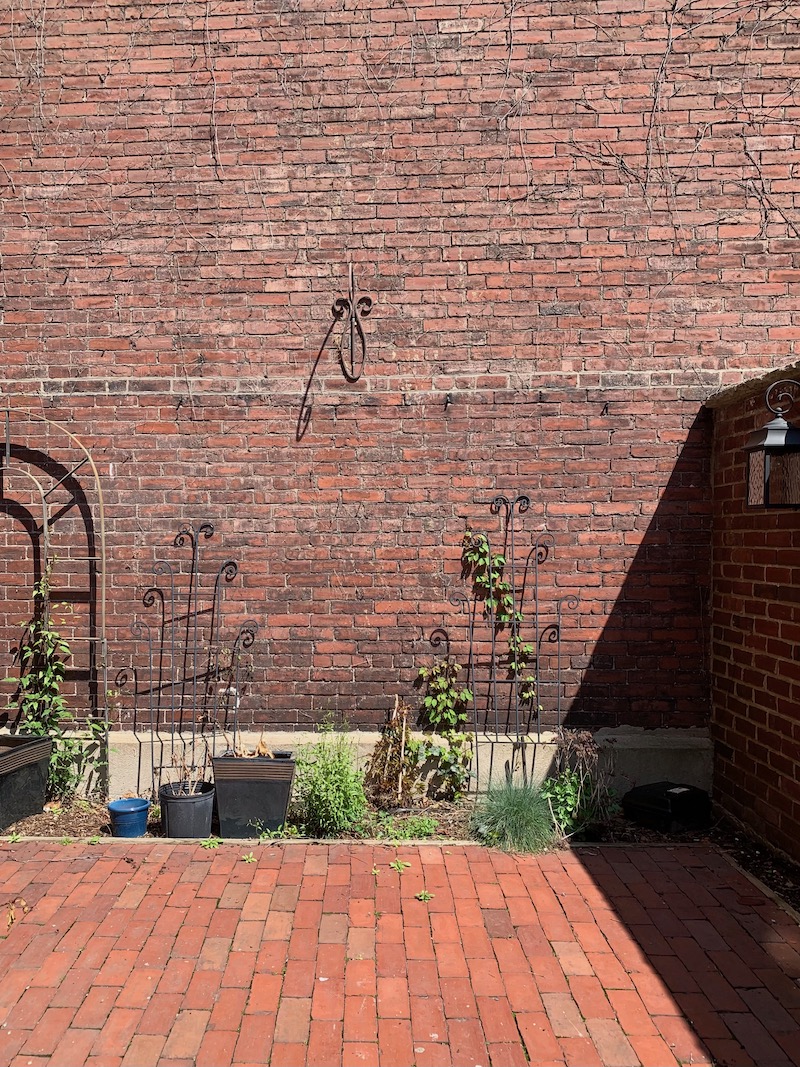
See what I mean?
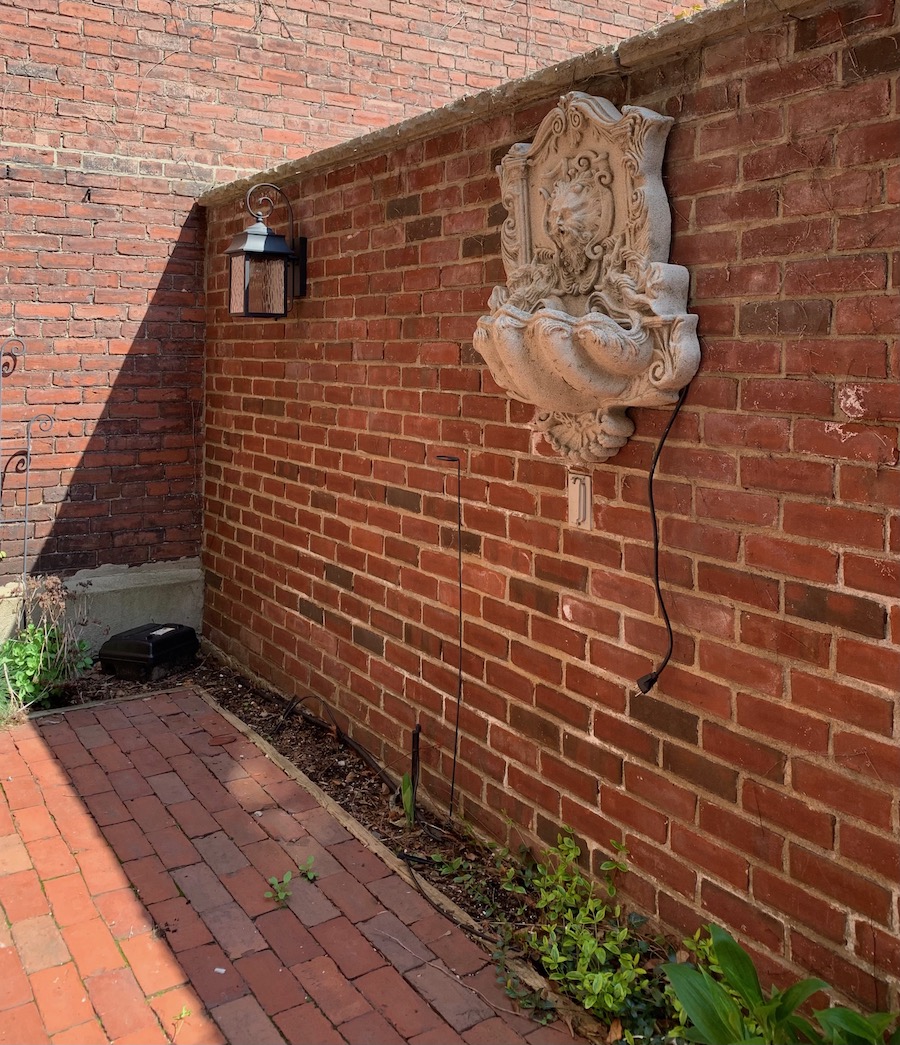
What’s with this 7″ deep flower bed? And, yes, that’s a rodent motel in the corner. Yuck.
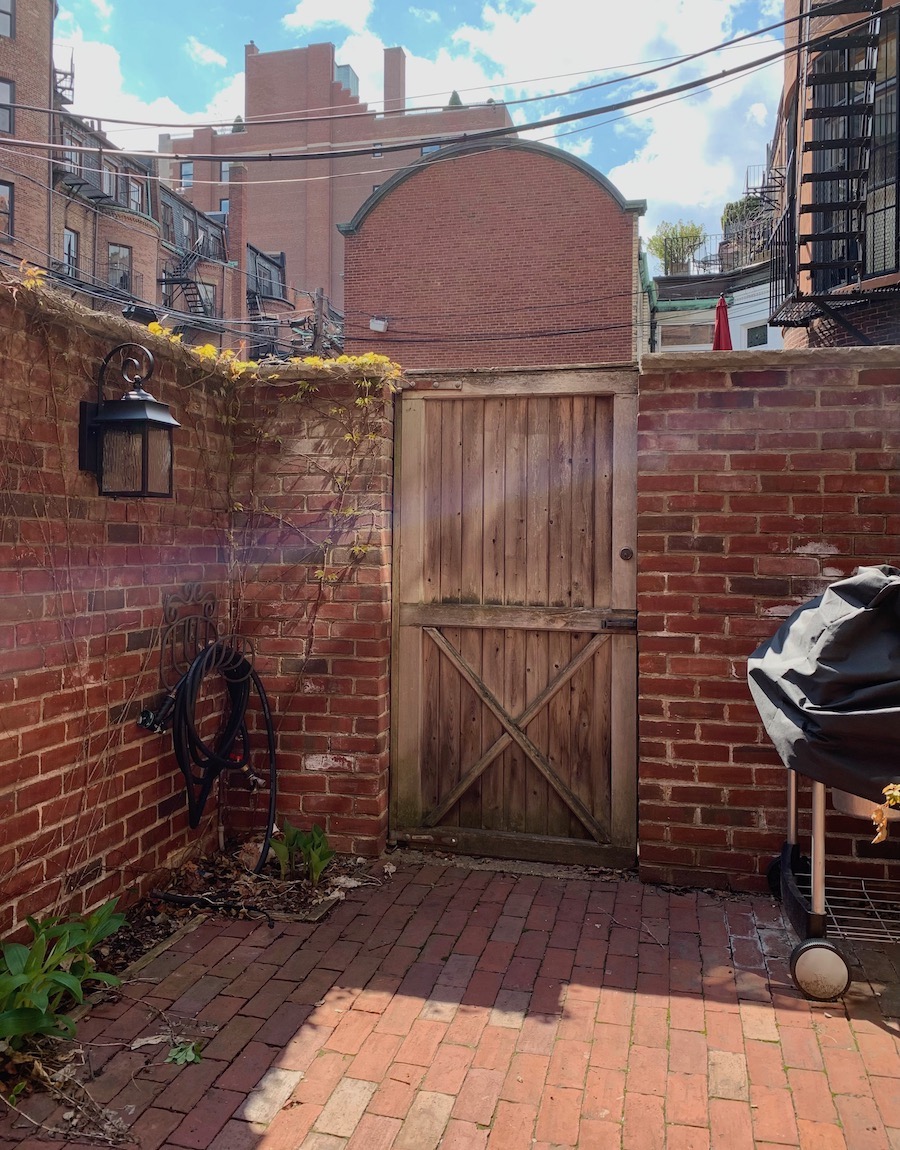
That dilapidated door is something that I would love to replace before long. Of course, I’ll need permission to do so.
Yes, there’s an automatic watering system. However, I need to figure out how it works.
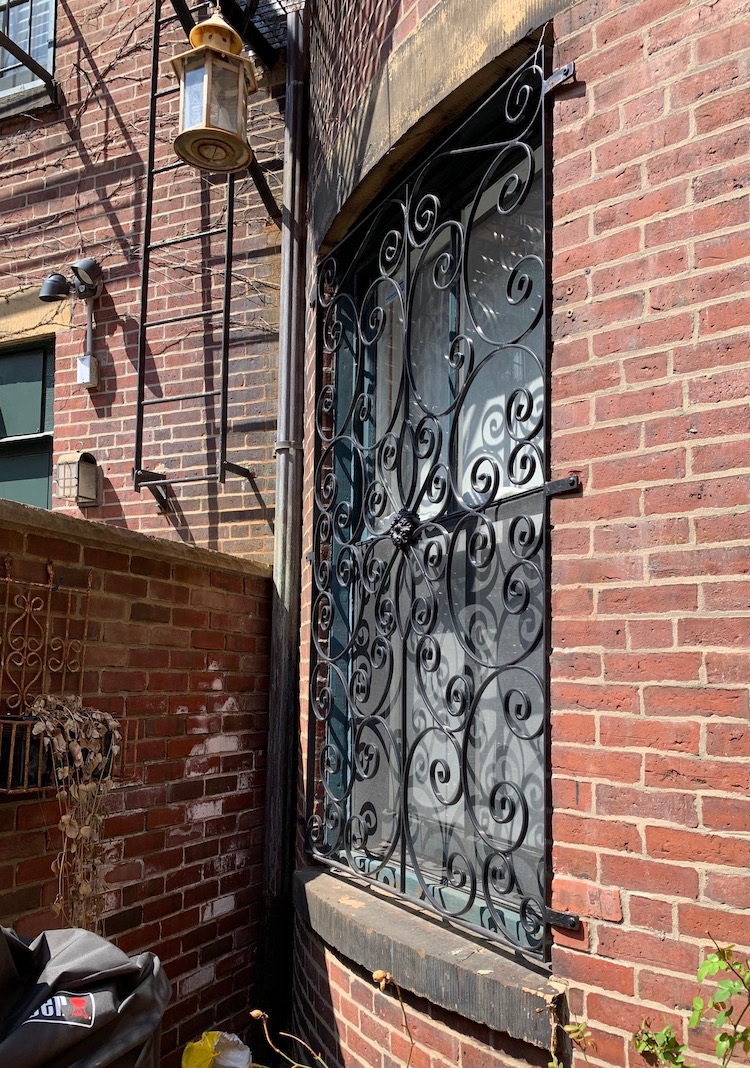
Anyone who’s been reading this blog for at least six months knows that I pretty much think this window guard sucks the big petunia. Or, in this case, rose bush. I mean, I hate it.
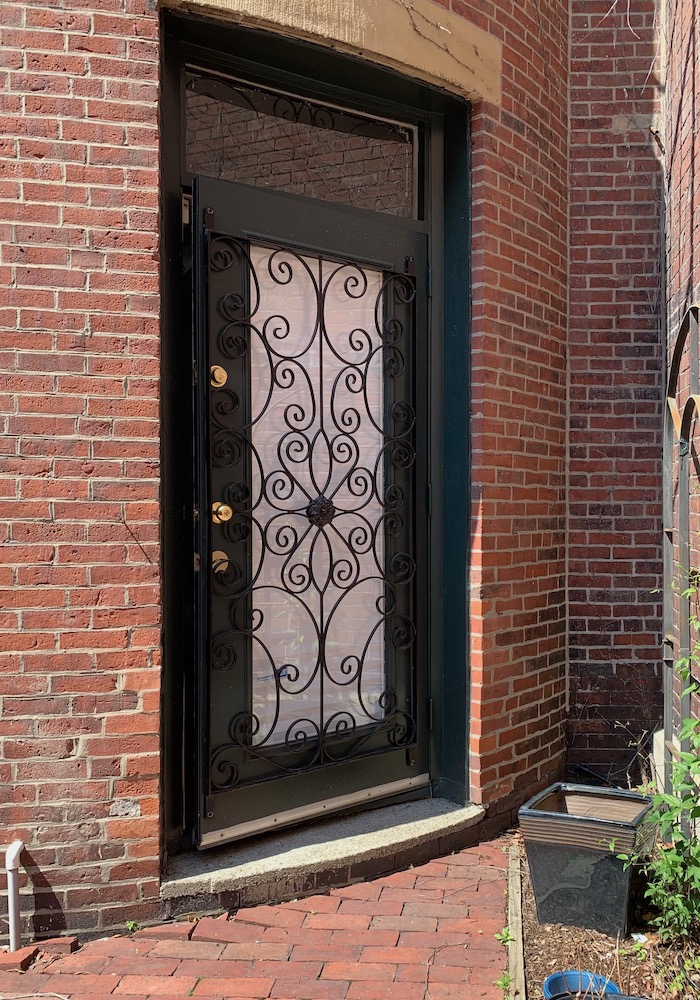 And, I hate the door guard too. Fortunately, I don’t have to look at it because my window covering hides it.
And, I hate the door guard too. Fortunately, I don’t have to look at it because my window covering hides it.
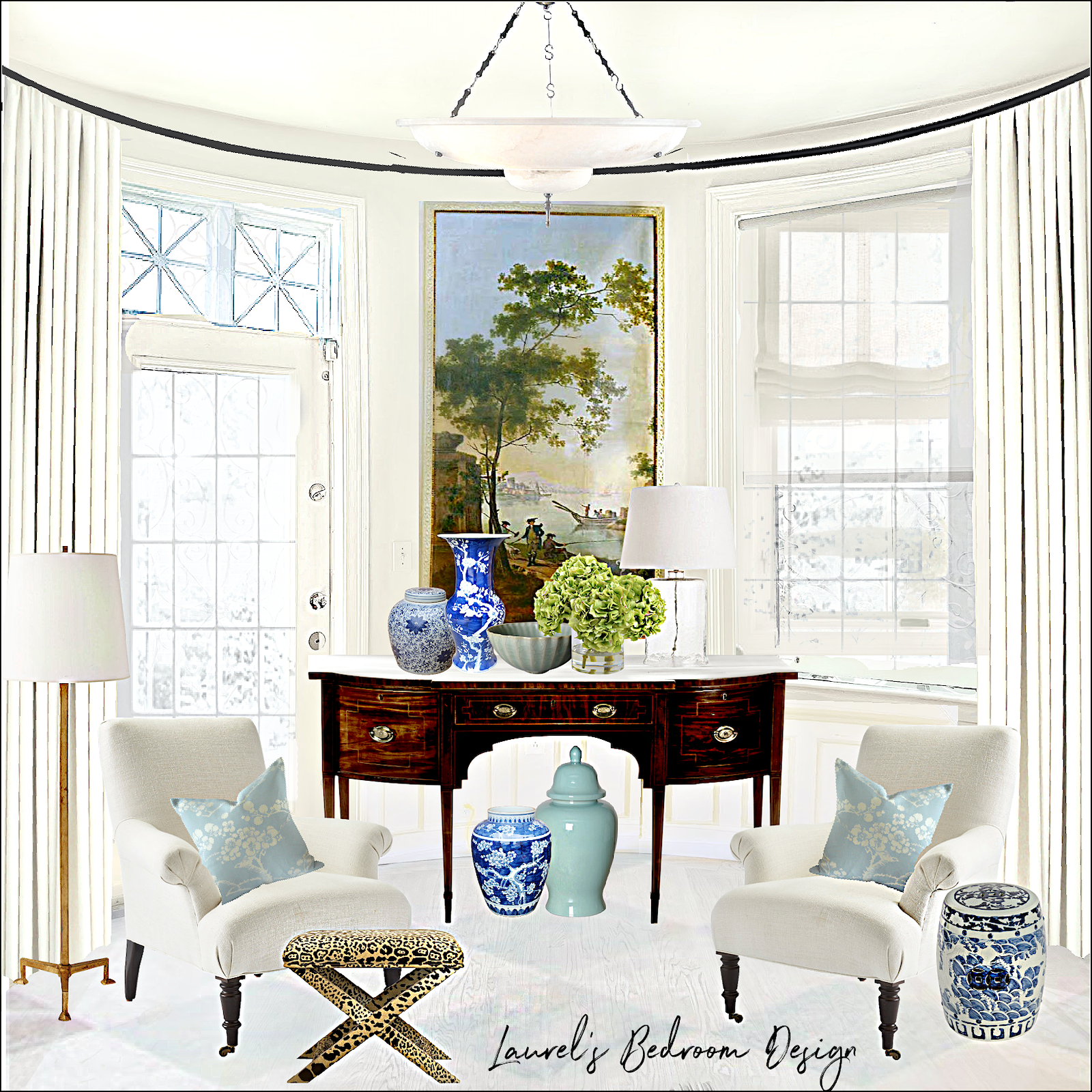
Remember my concept for a new bedroom? There’s one example of a far better door guard design. Well, for me.
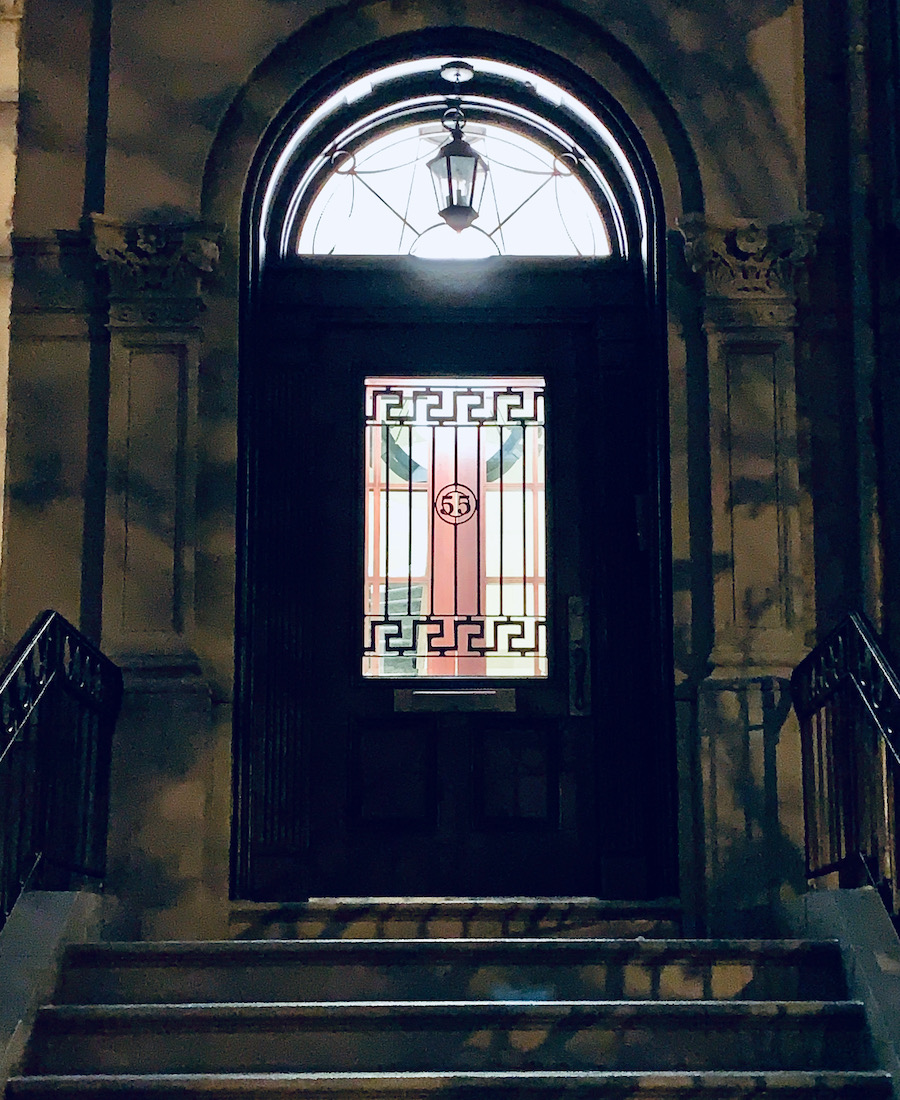
The other night, I was going for a walk and spied this attractive Greek Key design on a door guard. But, this could be adapted for a custom window guard.
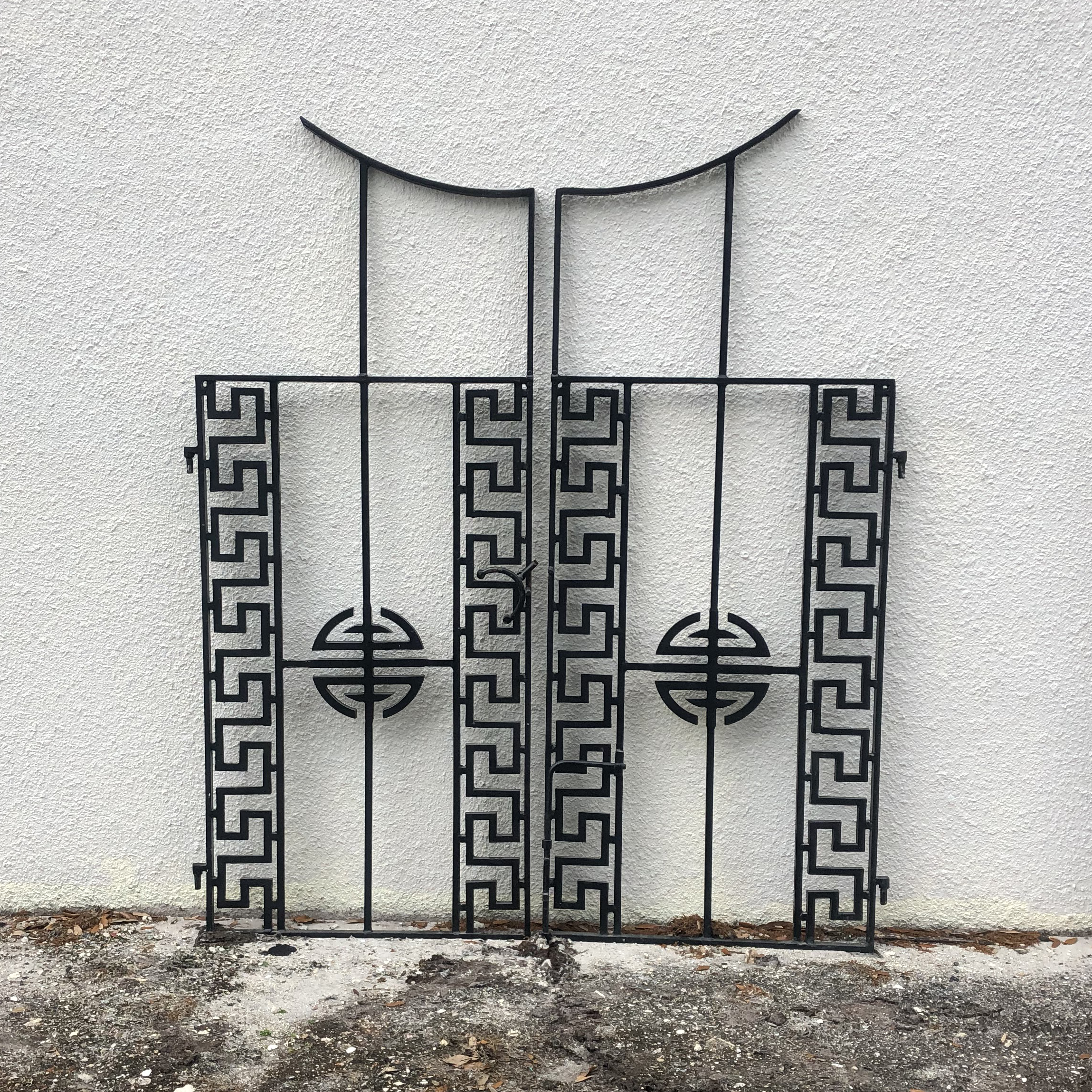
These are some gates that I found online several weeks ago. I think this is a cool design too. Or, something along these lines. But, that is another post.
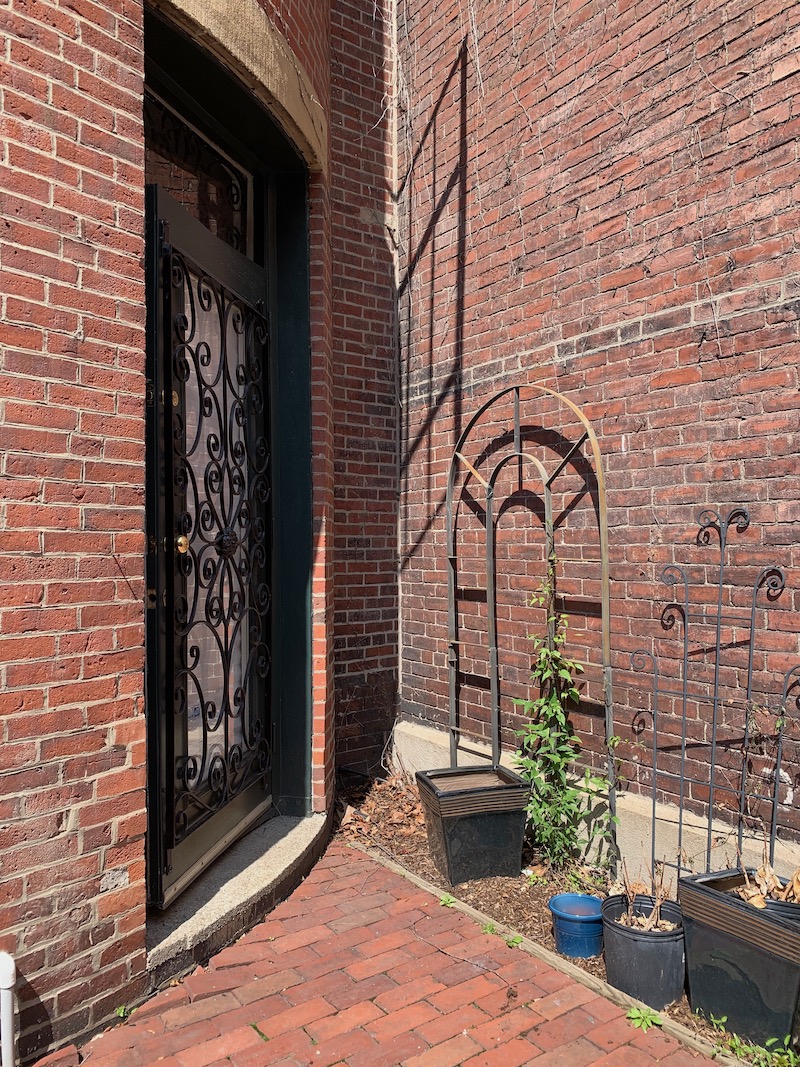
I’m not sure why the trellises were laid out this way. I would’ve put the big one underneath the hanging planter. But, anyway, time to clean things up.
So, fortunately, Cale was feeling almost perfect after his vaccine and gave me a lot of help.
 Above, Cale’s trying to identify one of the plants using a phone app.
Above, Cale’s trying to identify one of the plants using a phone app.
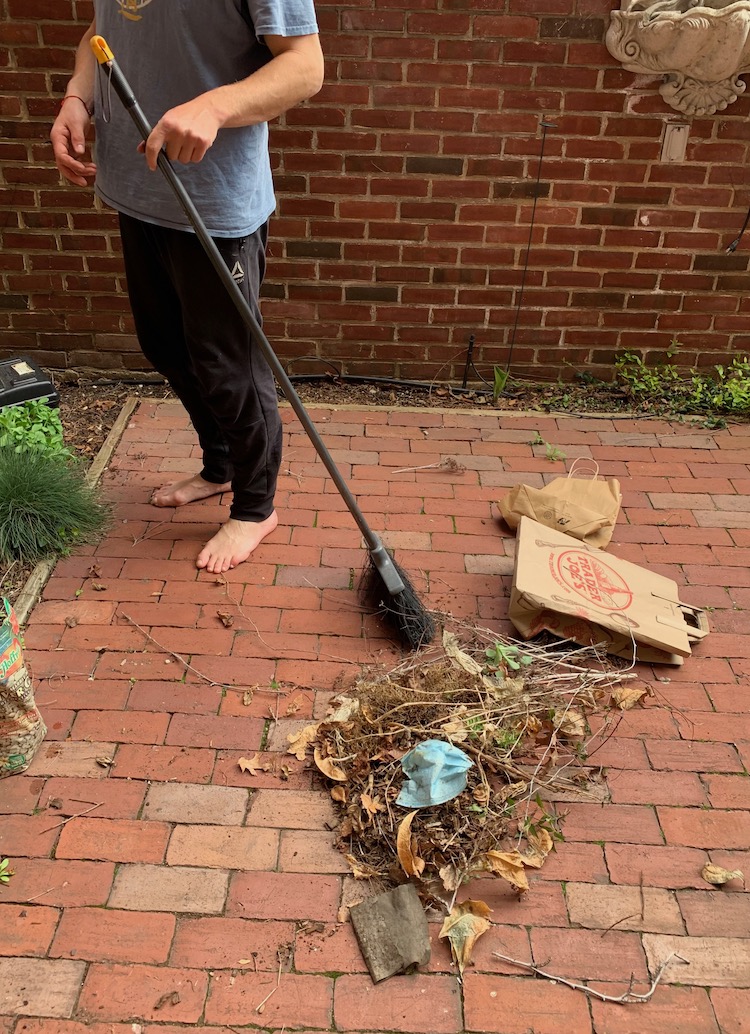
Lots of leaves, dead branches, flowers, and other detritus. And, yes, that’s a surgical mask that blew in. Is there a more telling sign of the times?
We worked for well over an hour in the bright sunshine, and then Cale needed to rest.
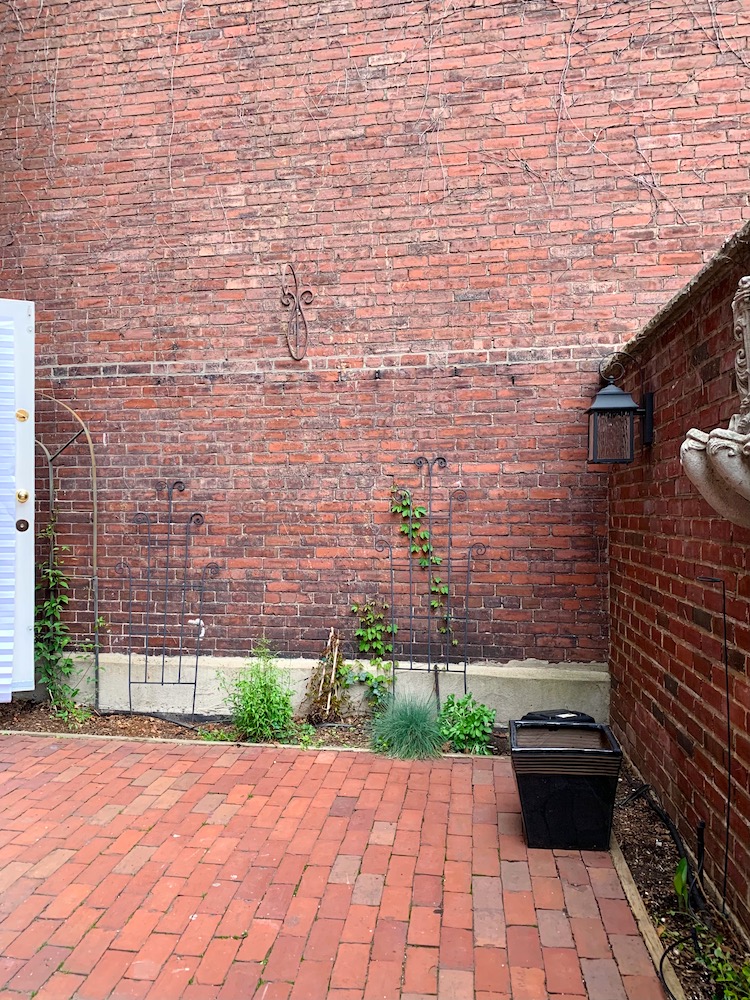
He did great! I was bloody useless the day after my 2nd vax.
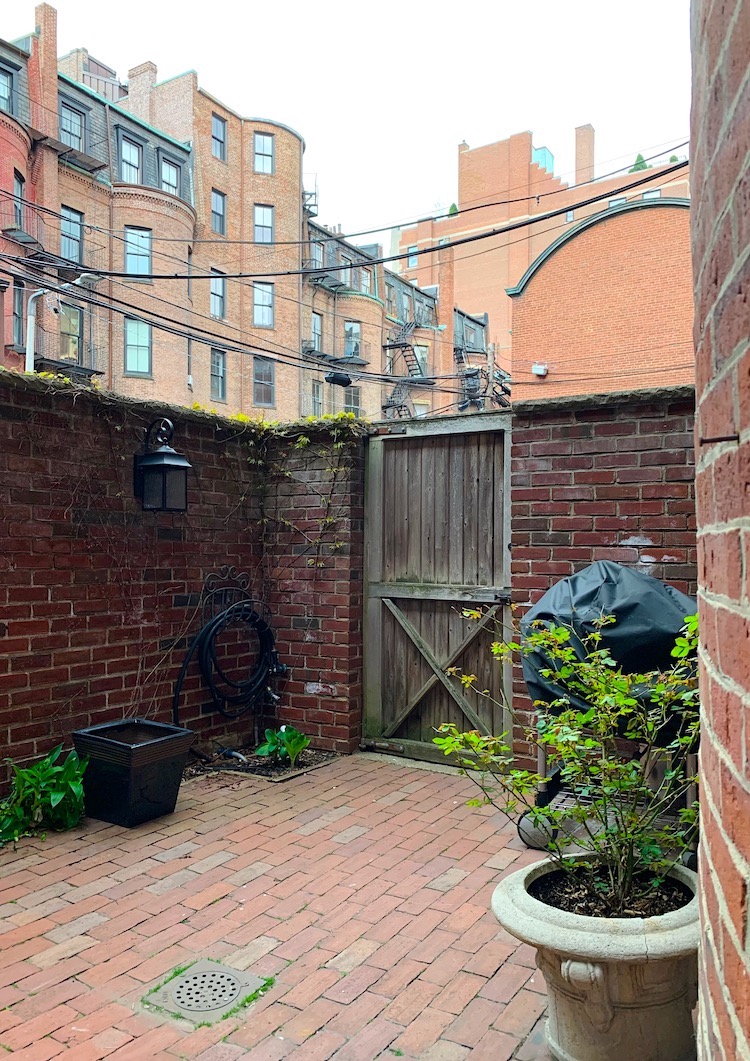 We even pruned the rose bush a little.
We even pruned the rose bush a little.
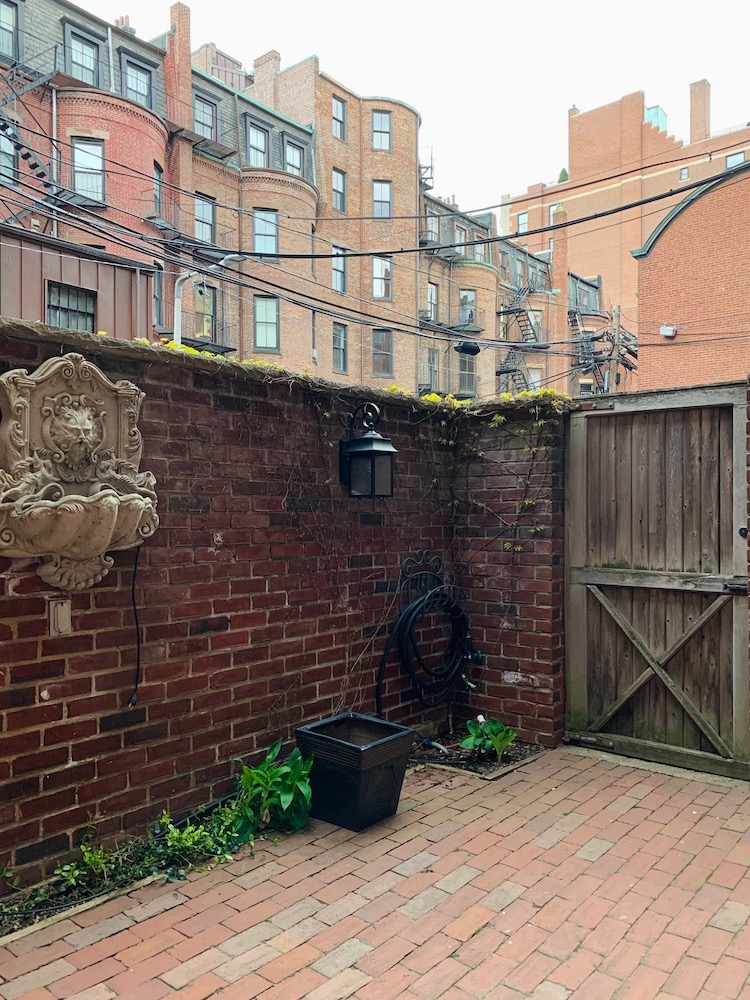
We’ll definitely need some potting soil.
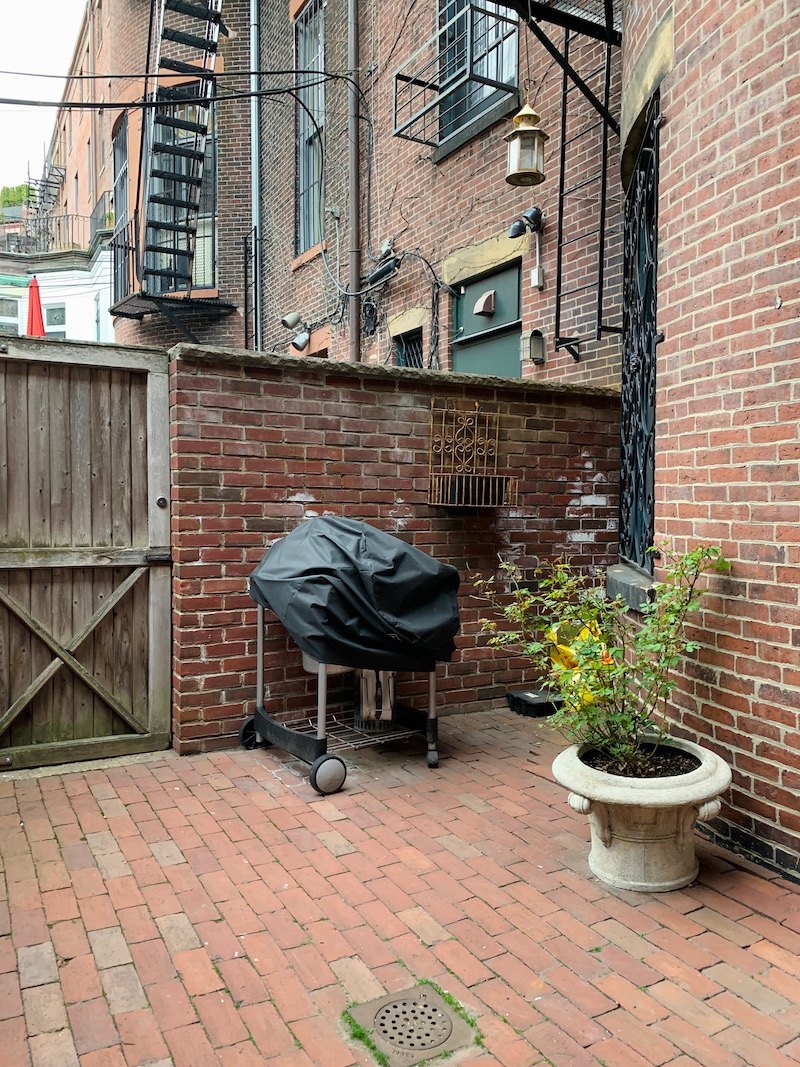
Please forgive the messy barbecue cover. It kept blowing off last winter. But, look how clean everything is! And yes, that’s another rodent motel in the opposite corner. There has to be some alternative for pest control? Any ideas?
So, tomorrow afternoon, Cale and I will take a trip to Allandale Farm in Chestnut Hill.
Chestnut Hill is a less urban, more residential, and very beautiful part of Boston a few miles south-southwest of where I live. Cale worked there part-time several years ago after he finished college at New England Conservatory.
I’m finishing off with a couple more inspiration photos.
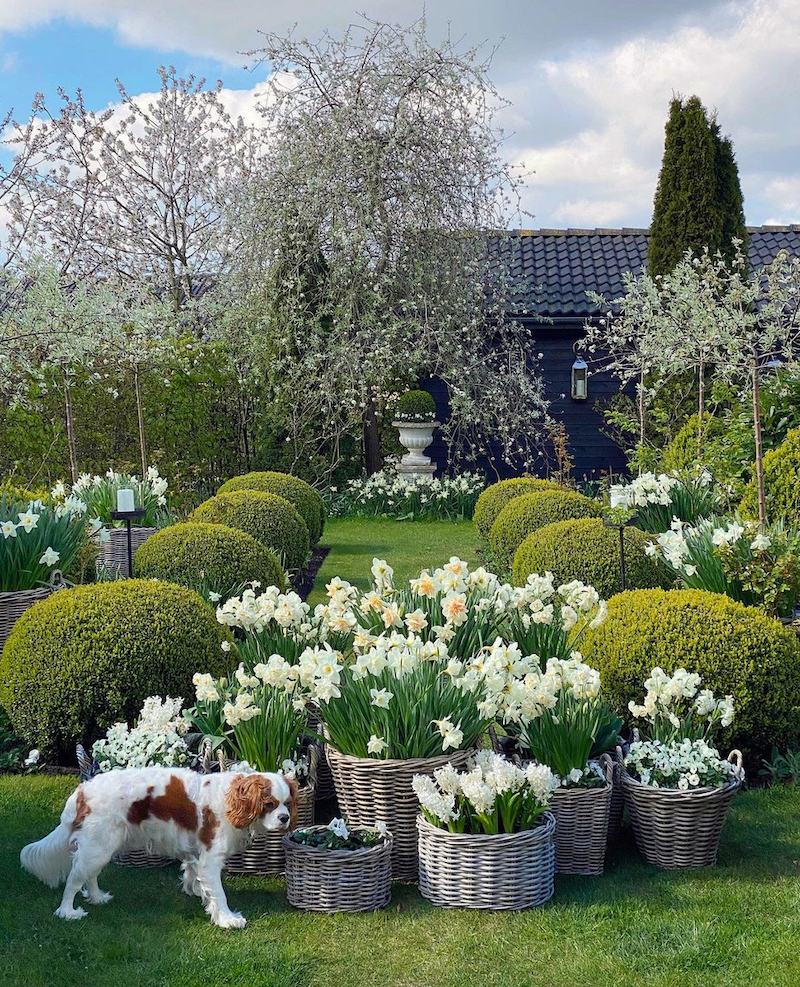 One more beauty from gncgarden on Instagram – exquisite garden
One more beauty from gncgarden on Instagram – exquisite garden
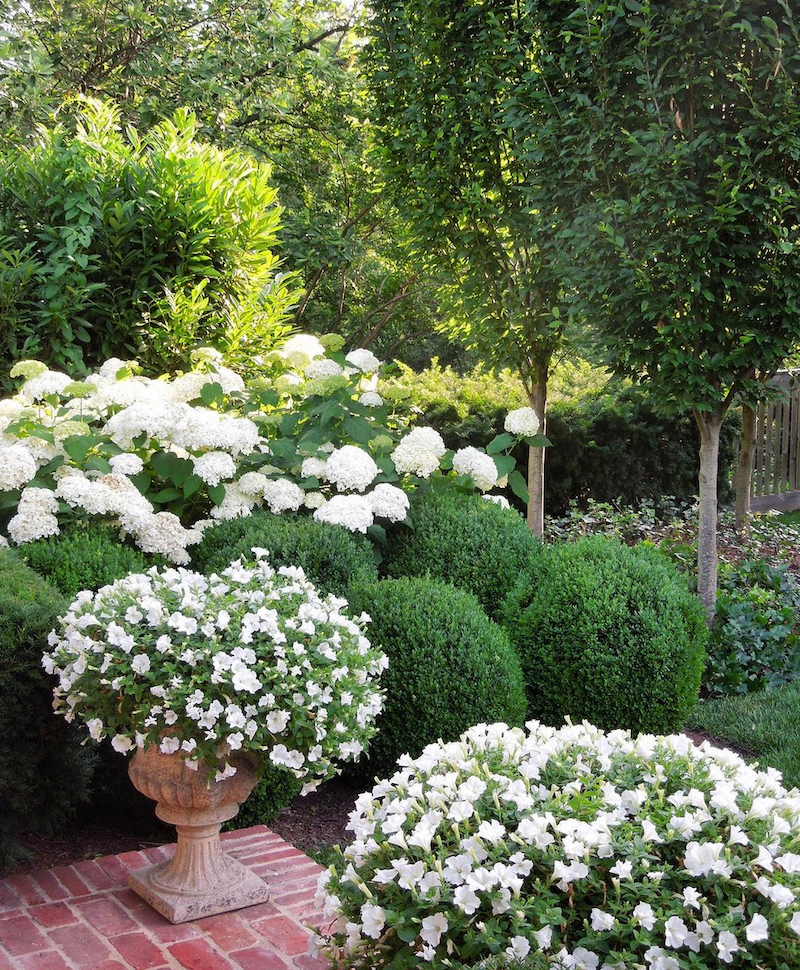
And, of course, the consummate designer and taste-maker, Loi Thai, whose Instagram account has zillions of followers, and for a good reason. Everything he touches is exquisitely beautiful!
I’m looking forward to hearing your thoughts. It’s a very small patio garden, and I want to keep it pretty simple.
You might also enjoy these two classic garden posts.
The Most exquisite Gardens and Landscaping Ever!
xo,

PS: Please check out the newly updated HOT SALES!
PPS: Yes, we’re taking Joe with us to Allandale Farm!!! I can’t wait to find him a larger pot! For those of you who don’t know who Joe is, you can read about him here.
And, you can see Joe here, here and here.
PPS: Thanks so much for all of the great advice, but please try to avoid links as they need to be moderated and made to open up in a new tab. Thank you.

And, here’s my boy (now 30) just before my super-nice neighbors came over for a visit. BTW, for any young women out there, he’s currently available and sweet as can be.
Related Posts
 How To Achieve Furniture and Color Balance in a Room
How To Achieve Furniture and Color Balance in a Room New Traditional Decorating – Little Known Ideas You’ll Love
New Traditional Decorating – Little Known Ideas You’ll Love Little Known Exquisite, Affordable Wallpaper Murals & Art
Little Known Exquisite, Affordable Wallpaper Murals & Art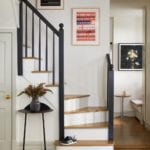 The Killer Spiral Staircase Alternative You Will Love
The Killer Spiral Staircase Alternative You Will Love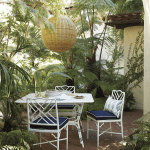 How To Create The Mark D Sikes Look For Your Patio Furniture
How To Create The Mark D Sikes Look For Your Patio Furniture The 40 Best Etsy Shops For Home Furnishings in 2021
The 40 Best Etsy Shops For Home Furnishings in 2021 Three interior decorators with no formal training– Scary!
Three interior decorators with no formal training– Scary!






